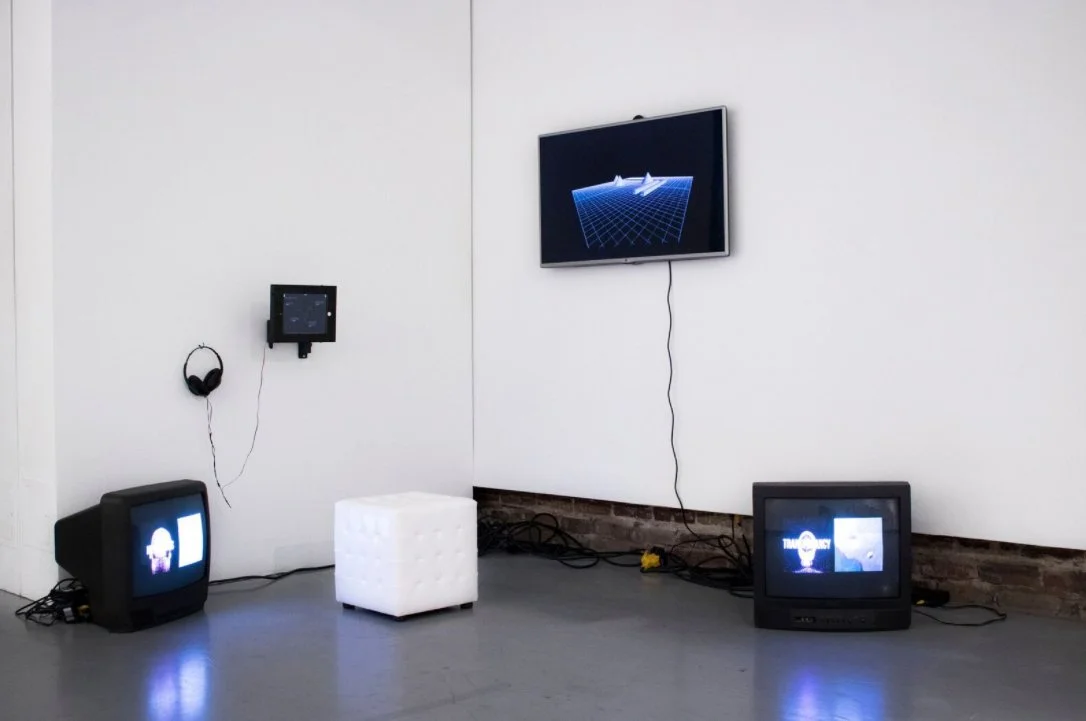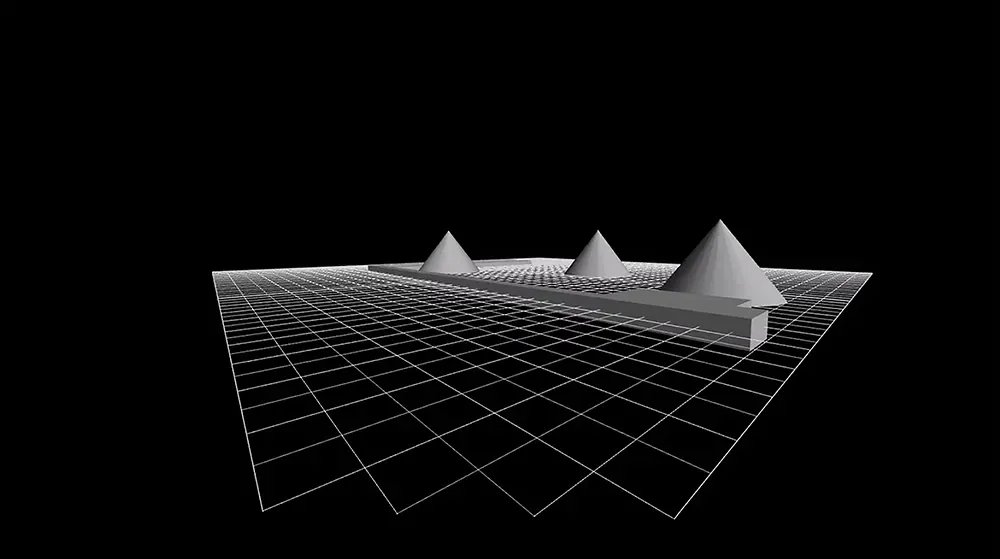"We Are Not Alone: A Digital Exploration of Planet X" (2016), single-channel HD video and HTML web-based application. Hamiltonian Gallery (Washington, DC), Sat, November 5, 2016 — Sat, December 17, 2016. Curated by Camilo Álvarez of Samsøñ, a gallery.
We Are Not Alone: A Digital Exploration of Planet X (2016) is a multimedia installation and HTML web-based application that interrogates codified systems of identity and place within the built environment. The project explores the corporeal materialization of Alec, a transcendent figure within the narrative’s framework, whose conscious reflections foreground inherent symmetries between organic and non-organic systems in space. Through the interplay of found and live action footage, computer-generated imagery (CGI), and narration, the film dissects the substructures of the [city], a grid-like terrain composed of geometric forms, wayward patterns, and cultural politics. The installation features three CRT monitors, a touch tablet containing the web-based application: Planet X, and a chair. Utilizing direct user interaction and call-to-action buttons, viewers explore the conscious domain of Alex and the material renderings of Planet X. We Are Not Alone: A Digital Exploration of Planet X (2016) premiered on Saturday, November 05, 2016, in [recombinant] fellows: RA, a group exhibition curated by Camilo Álvarez at the Hamiltonian Gallery in Washington, DC.
Hamiltonian Gallery Press Release:
[recombinant] fellows: RA is the result of a trip to Boston in which the Hamiltonian Fellows were challenged to consider the viewer’s experience as observed within the “laboratory” of varied contexts including the Isabella Stewart Gardner Museum, Harvard’s Ethelbert Cooper Gallery of African and African American Art, the Massachusetts Institute of Technology’s public art collection and List Visual Art Center. The resulting exhibition is the product of their consideration of audience engagement.
Eight isolates collected in the region were analyzed using available ontological sources and molecular typing assays. Surprisingly, despite the fact that all isolates except one, which was a mix in(af)fection, were typed as belonging to the strain in-on-(in)dependent molecular assays, all of them re(d)acted with both specific and non-specific monoclonal bodies. Partial sequence analysis on fo(u)r isolates demonstrated that, irrespective of their reactivity towards a and in specific monoclonal body, they were all closely related to a and the recombinant isolate. All isolates for/in which the relevant sequence was obtained showed the same recombination event as in the, around position. Complete sequencing did not provide evidence for additional recombination events in its evolutionary history. Taken together, these results indicate(d) that a group of closely related isolates characterized by a unique recombination prevalent under field conditions in the region. Similar to the situation with the strain, we propose that these isolates represent a novel st(r)ain, for which the name, relative assertion [RA], is proposed. Given that isolates cannot be identified by currently available typing techniques; it is possible that their presence has been overlooked in other situations. Further efforts and information allow a precise description of their prevalence and of their geographical distribution here and, possibly, in (an)other are(n)as. The full and precise message is only attainable through an energetic diversive sampling. – Camilo Álvarez (10.16)
Project Exhibition History:
[recombinant] fellows: RA, Hamiltonian Gallery (Washington, DC). November 05, 2016 - December 17, 2016
Time and Space, Czong Institute for Contemporary Art (CICA) (Gimpo, South Korea). February 17, 2017 - March 05, 2017
Mickalene Thomas: Better Nights at Bass Museum, Bass Museum (Miami, FL). December 01, 2019, to January 31, 2021
Untitled video still, We Are Not Alone: A Digital Exploration of Planet X (2016), single-channel HD video and HTML web-based application.










